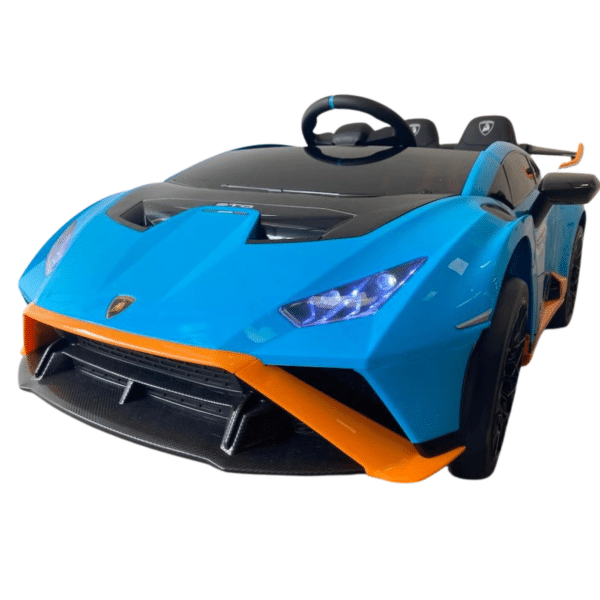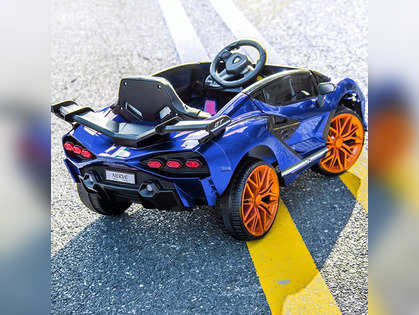Recommended Advice To Selecting Ride On Toys
Recommended Advice To Selecting Ride On Toys
Blog Article
What Safety Features Of The Ride-On Car Should I Consider? The Pros And Cons
If you are considering a ride-on automobile for your child Safety features are essential to ensure their safety during playtime. Here are a few security features that you must think about.
Seat belts can help ensure your child's safety when riding on the vehicle. This decreases the chance of them falling off or being ejected from the vehicle during play. Seat belts provide an additional layer of safety to your child, especially when there are sudden stops or sharp turns.
Cons - Some rides-on-cars might not come with seat belts. This is particularly applicable to those specifically designed specifically for children. Kids may also find the seat belts to be uncomfortable or restricting, leading them to refuse or avoid using them.
Sturdy Construction -
Pros: A sturdy ride-on vehicle with high-quality materials will last longer and be less likely to fail. This guarantees the safety and security of your children. It is able to withstand the challenges of playing and offer stability.
Cons – Durable construction comes at a high price, which can make it unattainable for a large number of families. The ride-on cars may also be less mobile and maneuverable when they're made of heavier materials.
Low Center of Gravity
Pros: Ride-ons that have an elongated center of gravity are less likely to tip, reducing the chance of accidents. They are also more stable and balanced, especially when turning or doing moves.
Cons - Ride-on cars that have a low center of gravity can sacrifice off-road capability or ground clearance, which restricts their range of use.
Remote control for parents
Pros - Remotely controlled ride-on vehicles allow parents to supervise and support their children's play, providing an added protection and security. Parents can intervene during emergencies and navigate treacherous terrains or even avoid collisions.
Cons: Controlling parents through a remote may limit independence and autonomy in children as they depend on their parents' guidance and help in their play. In addition, models that can be controlled remotely can be more costly than those with manual controls.
Speed Limiters
Pros – Ride-on cars that have speed limiters or adjustable speeds allow parents to limit the maximum speed and reduce the chance of accidents or collisions. They are able to gradually increase speed of the vehicle as a child gains confidence and skill.
Cons - Some children might get out of the lower speeds quickly, causing frustration or dissatisfaction with the ride-on vehicle. In addition, speed limiters may not be accessible on all models or may require additional features or other accessories.
Safe Start Technology -
Pros - Safe start technology ensures that the ride-on automobile starts and stops without a hitch, eliminating the danger of lurches or sudden jerks which could cause panic or even harm the child. It makes riding more comfortable and safe.
Pros - Some cars that have safe-start technology cost more than those without it. Additionally, some children may find the gradual acceleration and deceleration to be less thrilling or exciting as opposed to immediate stops and starts.
Visibility Enhancements
Pros - Ride on vehicles that feature visibility enhancements, such as functioning taillights or headlights as well as reflective materials improve visibility, particularly in dimly-lit areas or low-light conditions. The cars are noticeable, which improves safety.
Cons - Visibility enhancements could make batteries less efficient or cause problems with ride-on vehicle designs, causing more maintenance and malfunction risk.
You can guarantee your child's security by weighing the pros and cons of these features. Check out the top rated kids cars for more advice including pedal car, ride of car, electric car ride, toy cars toy car, race car toy, electric ride on cars, childs electric ride on car, childrens electric ride on, toy in car, ride a toy and more. . 
What Maintenance And Assembly Is Required For The Kid's Car Ride-On?
Assembling and maintaining ride-on toys for children is essential to maintain their safety, functionality and long-term durability. Here are a few common assembly and maintenance needs for children's ride-on cars:
Most ride-on cars come partially assembled and require some assembly upon their arrival. It usually involves attaching parts such as the wheels as well as the seats, steering wheel and other accessories in accordance with the specifications of the manufacturer.
Follow the assembly guidelines carefully and ensure that every piece is securely connected. In accordance with the directions to complete the assembly, use the provided hardware and tools.
Cleaning -
The cars that ride on them need to be cleaned frequently to ensure they look good and perform correctly. Make use of a soft cloth that has been dampened with mild soap and water to clean exterior surfaces.
Pay particular attention to areas that are susceptible to accumulation such as undercarriage, tires and wheels. Use a brush or toothbrush to scrub hard-to-access areas and remove stubborn grime.
Beware of harsh chemicals and detergents that are abrasive. They can harm electronic parts or the paint of the ride-on car.
Battery Care
It is essential to maintain the battery when your vehicle you drive by a battery that is able to be recharged. This will allow you to keep your battery running and prolong battery life. Follow these tips for caring for your battery for proper care of your battery
Fully charge the battery before use and each time to maximize runtime.
Beware of overcharging the battery or leaving the battery connected to the charger for prolonged durations, since this could damage the battery and reduce its lifespan.
The ride-on car battery should be stored in a cool, dry area when not being used in direct sunlight or temperatures that are extreme.
The terminals of the battery should be checked regularly for signs of corrosion and damage. They may be cleaned using a wire bristle or terminal cleaner, if required.
Replace it if the battery is not able to hold the full charge or displays evidence of damage or deterioration.
Tire Maintenance -
Inspect the tires frequently to look for any signs like wear, damage, or loss of pressure. If necessary, you can make use of a bicycle air pump or air compressor to inflate tires to the pressure recommended by.
Check for foreign and debris objects in the tread pattern that could cause punctures. Replace the damaged tires and eliminate any obstructions.
Lubricate your axles and wheel-bearings to ensure smooth rotation.
Occasional Repairs or Replacements -
Despite routine maintenance, ride-on vehicles could require repairs on occasion or replacement of parts due to wear and tear or accidental damage.
Be on the lookout for indications of malfunction or deterioration, such as unusual noises or power loss or unusual behavior. You can consult the user's manual or call support at customer service to assist with repair and troubleshooting.
To prevent further damage, replace damaged or worn-out components as soon as you can to ensure safety and functionality.
These instructions for maintenance and assembly will assist you in keeping your child's car ride in good shape, allowing them to enjoy safe and fun playtime. View the most popular click here on electric kids cars for site info including car for toy, childrens ride on, ride of car, electric two seater cars, electric two seater cars, electric ride on, car on ride, ride ons, toy cars, car electric ride on and more. . 
What Should I Consider Before Purchasing An Electric Car For My Kids? What Are Pros And Con?
There are many factors to consider when choosing an electric children's car. Here are some suggestions to take into consideration along with information on the sizes, price, pros, or pros and.
Select an electric child's car depending on the age and size your child. Children who are younger and smaller might prefer lightweight, compact cars. Children older than them and those with larger bodies might require larger cars that are able to accommodate them comfortably.
Car Size and Weight
Electric cars can be found in a variety of sizes. They can vary from tiny, small cars to larger-scale models of actual cars. Take into consideration the weight and size of the car in relation to your child's size, age, and strength, in addition to the available space for storage and playing.
Price range
The price of electric cars for kids can vary greatly depending on many factors, including the size, model and the quality. Prices of microsized models usually range between $50 and 200 dollars, while prices for larger-scale models could range from $200 to $800.
Pros and Pros and
Pros -
Entertainment - Electric kid's vehicles provide hours of fun and imaginative play for kids who want to experience the thrill of driving their own vehicle.
Motor Skill Development: Driving an electric vehicle can help develop spatial awareness and fine motor abilities in children.
Electric cars encourage outdoor play, physical exercise and exploration.
Realistic Details - A lot of electric kids' cars have realistic details such as working headlights MP3 player compatibility and sounds from the horn. These features can enhance the playing experience.
Cons
Electric cars that are of high-quality cost a lot, particularly when you buy authentic replicas.
Battery life – Electric vehicles use rechargeable batteries that power their motors, but these batteries may have a limited lifespan and need frequent recharge.
Safety Issues Electric cars are prone to safety hazards including collisions, falls, or the possibility of entrapment. This is particularly the case if the car is not utilized with care and supervision.
Assembly and maintenance - Some electric vehicles require assembly prior to arriving and regular maintenance. This includes cleaning, battery maintenance and periodic repairs or replacements.
Features and Accessories
Check out the options and features that are offered for the electric vehicle for children. For example, working headlights and horn sounds. Pick a model that fits your child’s interests and tastes.
Ultimately, the best electric kids' car for your child is based on factors like their size, age, and interests and budget. Be sure to read reviews, look at models and take into consideration the pros and con before making the final choice. See the recommended kids cars kidscars.co.uk recommendations for blog examples including toy the car, electric two seater cars, car on ride, electric toy car, electric toy car, car toy toy, race car toy car, two seater childrens electric cars, car toy car toy, childs electric ride on car and more. .